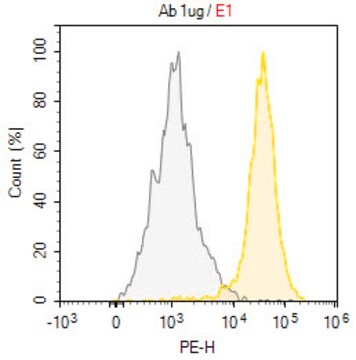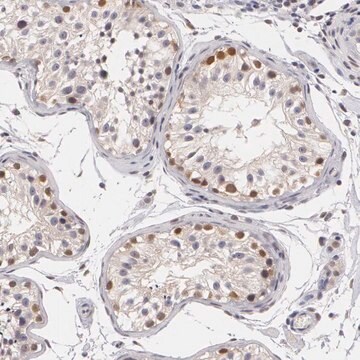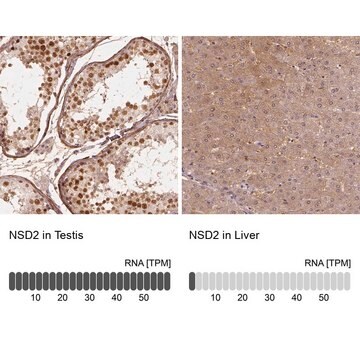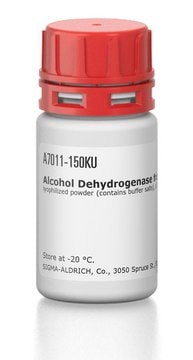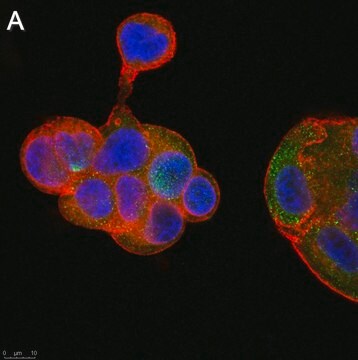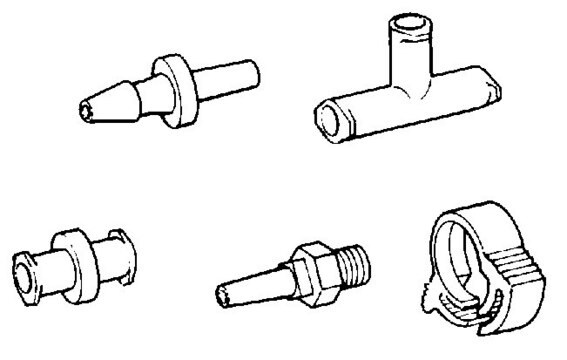MABE1990
Anti-PLZF/ZBTB16 Antibody, clone Mags-21F7
Synonim(y):
Promyelocytic leukemia zinc finger protein, Zinc finger and BTB domain-containing protein 16, Zinc finger protein 145, Zinc finger protein PLZF
About This Item
WB
western blot: suitable
Polecane produkty
pochodzenie biologiczne
hamster
Poziom jakości
forma przeciwciała
purified antibody
rodzaj przeciwciała
primary antibodies
klon
Mags-21F7, monoclonal
masa cząsteczkowa
observed mol wt ~75 kDa
oczyszczone przez
using protein G
reaktywność gatunkowa
human, mouse
opakowanie
antibody small pack of 100
metody
flow cytometry: suitable
western blot: suitable
izotyp
IgG2
sekwencja epitopowa
Unknown
numer dostępu Protein ID
numer dostępu UniProt
temp. przechowywania
2-8°C
informacje o genach
human ... ZBTB16(7704)
Specyficzność
Immunogen
Zastosowanie
Evaluated by Western Blotting with recombinant Human PLZF/ZBTB16 protein.
Western Blotting Analysis: A 1:500 dilution of this antibody detected full-length, FLAG-tagged recombinant Human PLZF/ZBTB16.
Tested Applications
Western Blotting Analysis: A representative lot detected PLZF/ZBTB16 in Western Blotting applications (Kovalovsky, D., et al. (2008). Nat Immunol. 9(9):1055-64).
Flow Cytometry Analysis: A representative lot detected PLZF/ZBTB16 in Flow Cytometry applications (Kovalovsky, D., et al. (2008). Nat Immunol.;9(9):1055-64; Kovalovsky, D., et al. (2010). J Immunol. 184(12):6746-55).
Note: Actual optimal working dilutions must be determined by end user as specimens, and experimental conditions may vary with the end user.
Opis wartości docelowych
Postać fizyczna
Rekonstytucja
Przechowywanie i stabilność
Inne uwagi
Oświadczenie o zrzeczeniu się odpowiedzialności
Nie możesz znaleźć właściwego produktu?
Wypróbuj nasz Narzędzie selektora produktów.
Kod klasy składowania
12 - Non Combustible Liquids
Klasa zagrożenia wodnego (WGK)
WGK 1
Temperatura zapłonu (°F)
Not applicable
Temperatura zapłonu (°C)
Not applicable
Certyfikaty analizy (CoA)
Poszukaj Certyfikaty analizy (CoA), wpisując numer partii/serii produktów. Numery serii i partii można znaleźć na etykiecie produktu po słowach „seria” lub „partia”.
Masz już ten produkt?
Dokumenty związane z niedawno zakupionymi produktami zostały zamieszczone w Bibliotece dokumentów.
Nasz zespół naukowców ma doświadczenie we wszystkich obszarach badań, w tym w naukach przyrodniczych, materiałoznawstwie, syntezie chemicznej, chromatografii, analityce i wielu innych dziedzinach.
Skontaktuj się z zespołem ds. pomocy technicznej